How to Install Ubuntu in VMware Workstation 15 on Windows 10

Sometimes, just one operating system is too limited. We need more than that. It doesn't make sense to buy another computer with different operating system or uninstall the operating system to which we get used on computer we owned and install another OS with which we are not familiar. The best way is to install a virtual machine to run another operating system. It makes much more sense. Therefore, in this article, we're going to give a step-by-step guide on how to create a new virtual machine and install Ubuntu in VMware Workstation 15 and install Ubuntu on Windows 10 VMware.
Part 1: Preparation for virtual machine and system installation.
1. Download VMware Workstation.
VMware Workstation is one of the most popular and common tools worldwide to build a virtual machine with more amazing features, which makes us choose it in this article.
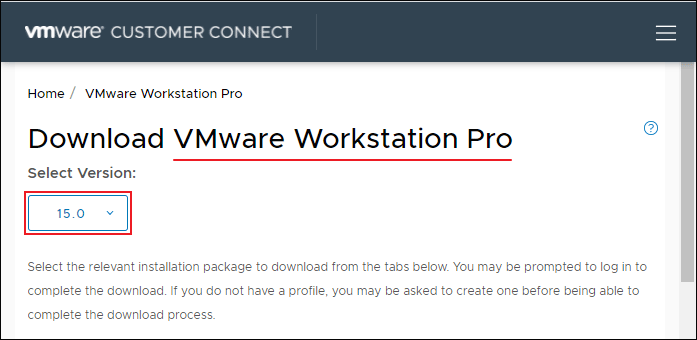
2. Download Linux Ubuntu ISO file.
Download the ISO file of Ubuntu and store it to a USB flash drive.
Ubuntu is one of released versions of Linux and famous for its friendliness for greenhands to Linux operating system.
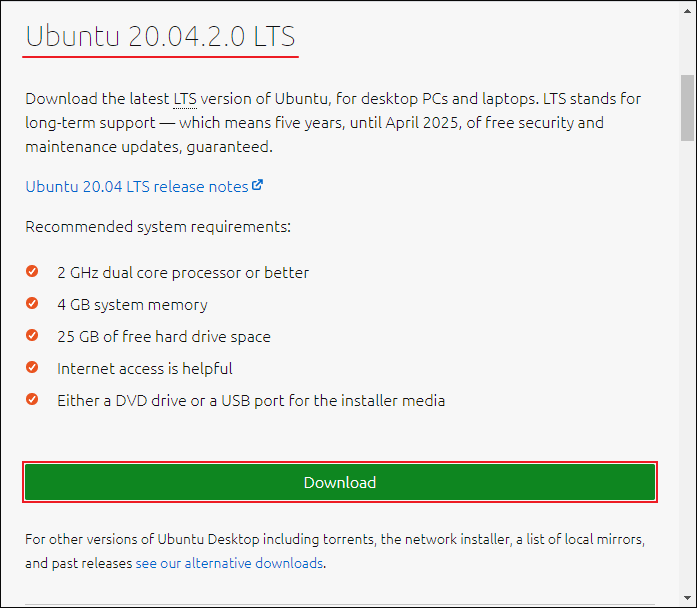
Part 2: Create Ubuntu virtual machine with VMware Workstation.
Open VMware Workstation, and click Create a New Virtual Machine in the Home page.
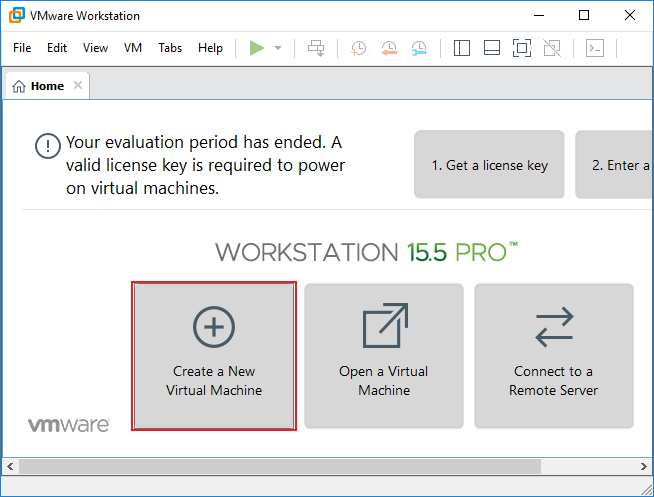
Typical configuration may be much easier to create a virtual machine but less compatible. Therefore, here custom configuration is recommended.
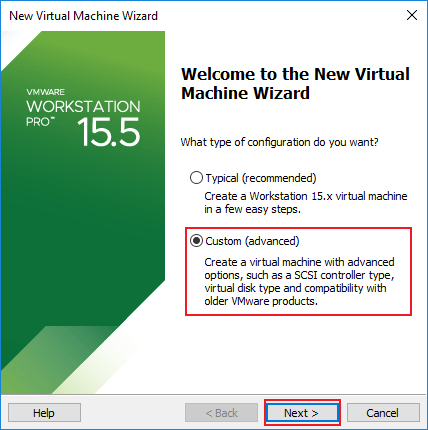
Move on to Virtual Machine Hardware Compatibility. Generally, there's no need to change the default setting.
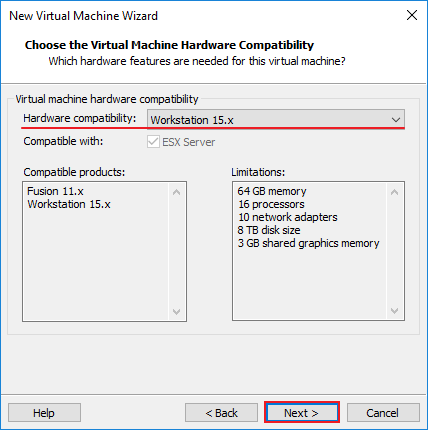
As for operating system installation, set it aside and we'll get to it on the next part.
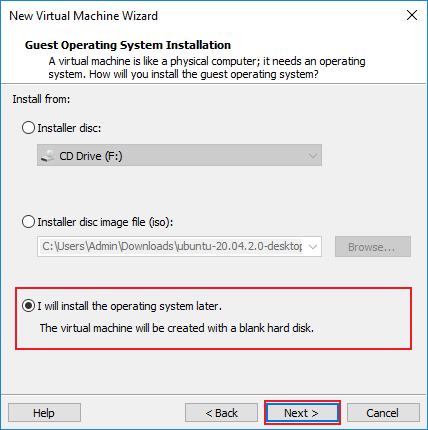
Since we're going to install Linux operating system, select Linux as guest operating system. And choose Ubuntu version resulting from its friendliness to new users for Linux.
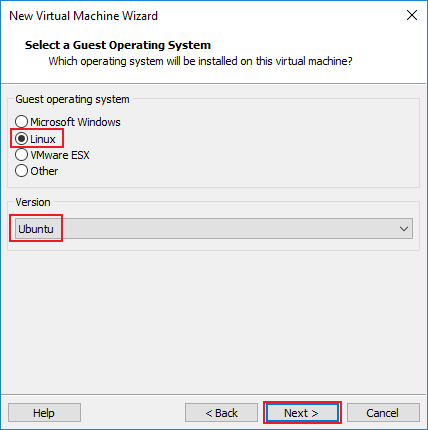
Name the virtual machine and choose a location that has enough space for this machine.
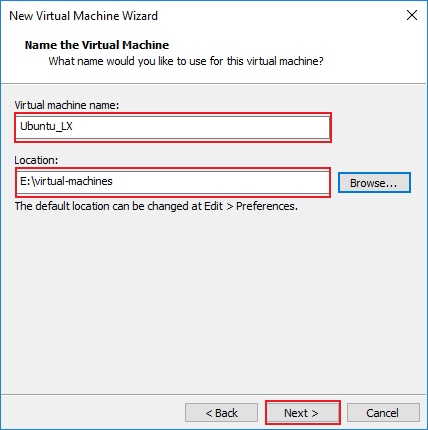
We specify 4 processor cores in total for this virtual machine for better performance.
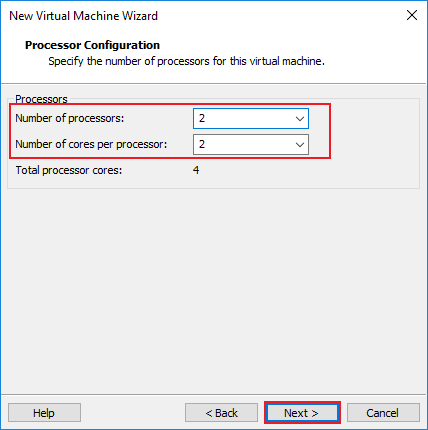
Spare memory for virtual machine. 2G should be just fine.
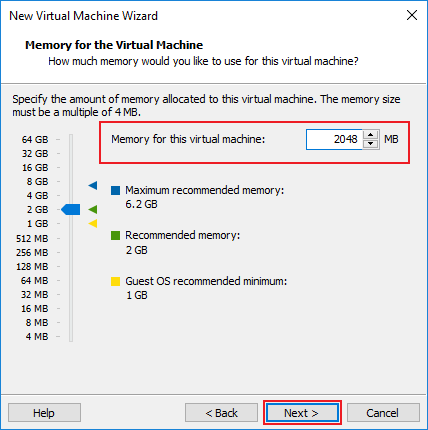
As for network type, I/O controller type and disk type, leave it for Wizard. It's not necessary to change the settings, so, why bother? Directly click Next.
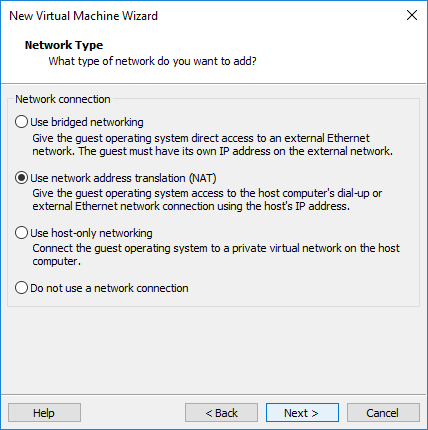
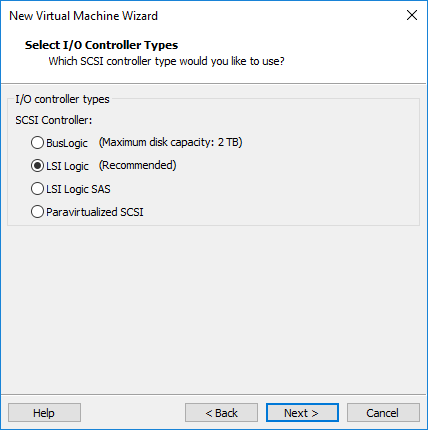
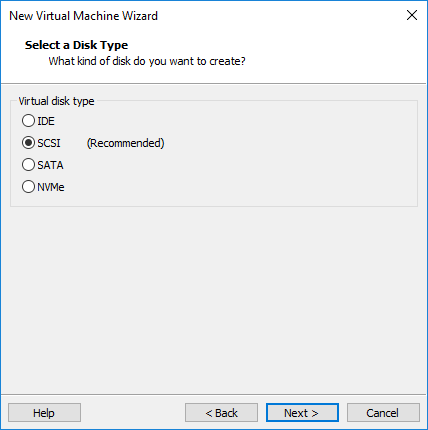
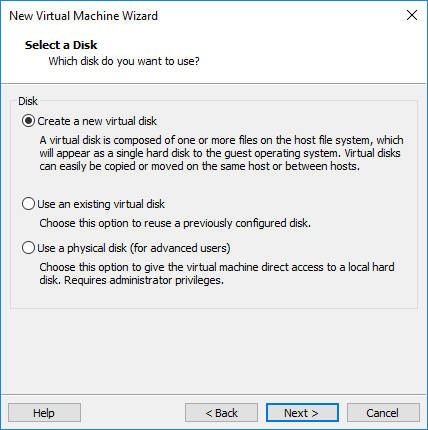
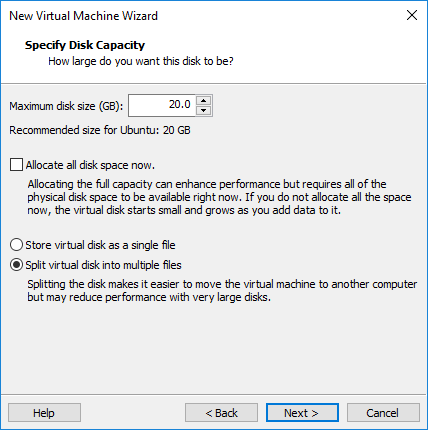
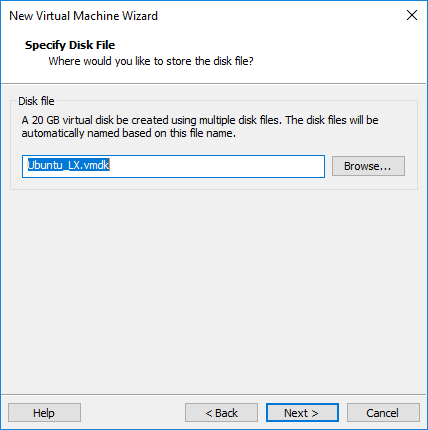
Ready to create virtual machine. Click Finish to set on creating process.
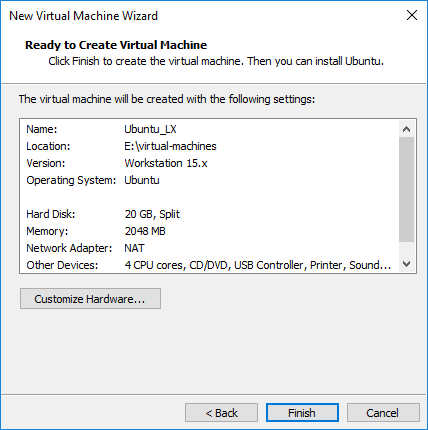
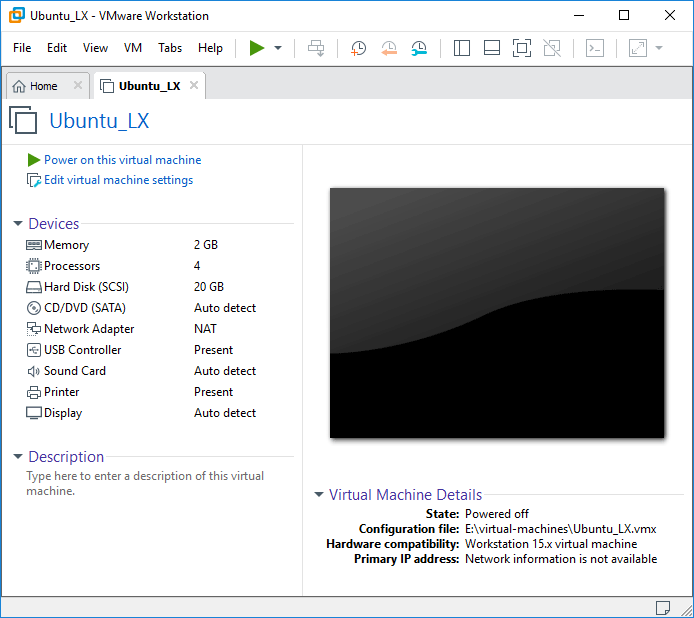
Part 3: Install Linux Ubuntu on the created virtual machine.
Click Edit virtual machine settings to choose the Linux Ubuntu installation pattern.
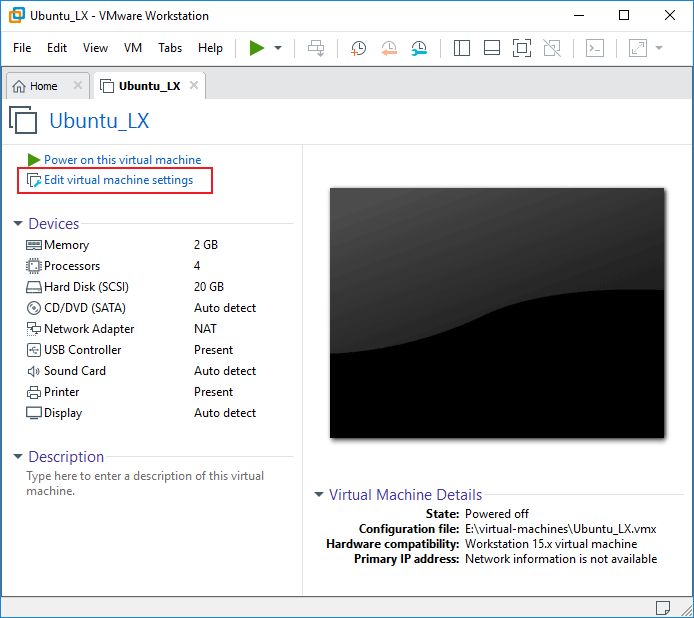
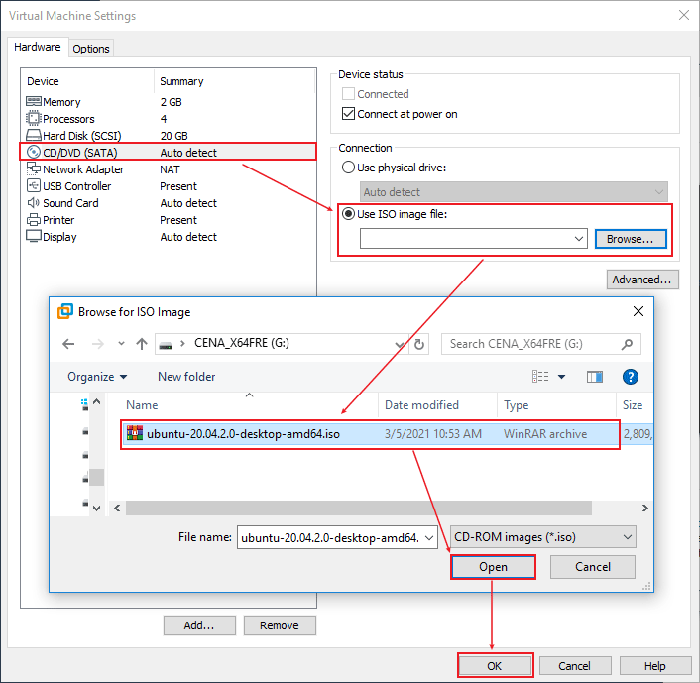
Click Power on this virtual machine to set it on.
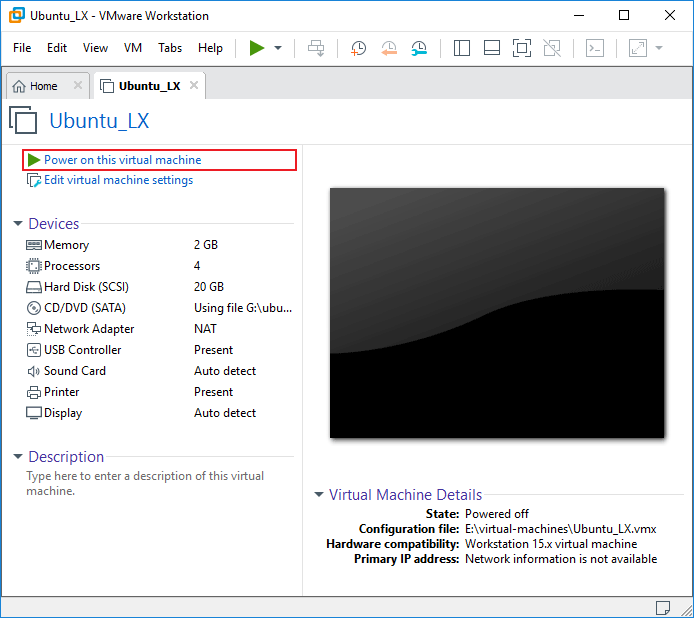
Choose the language on the left pane displayed during installation and click Install Ubuntu on the right pane.
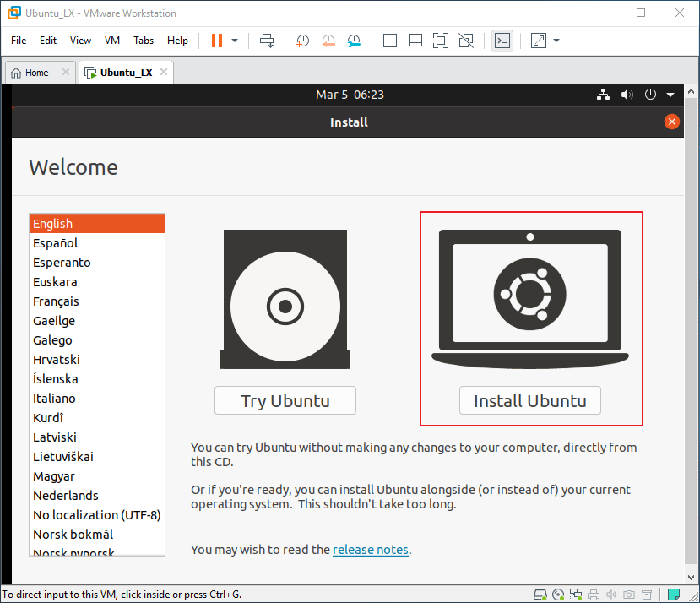
Choose Keyboard layout. In general, we choose English (US). After choosing, users can have a try on the horizontal box below to see if the choice is correct.
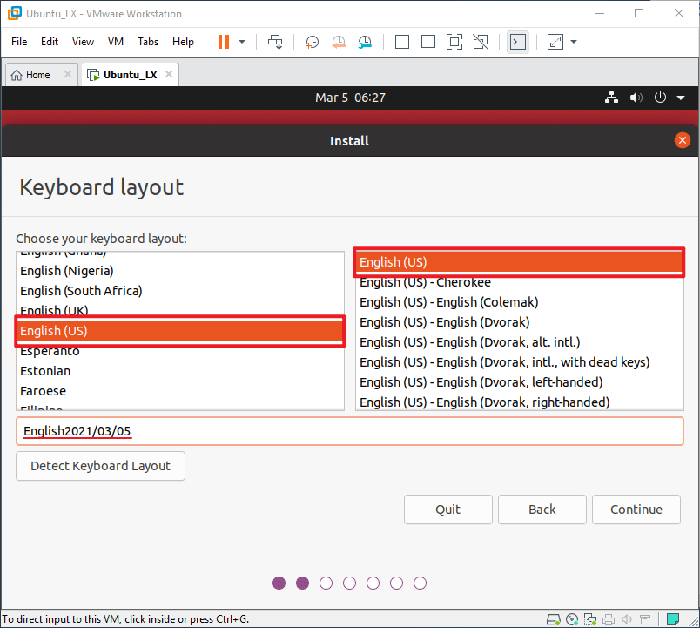
In the following two steps, it's cool enough to leave it as default.
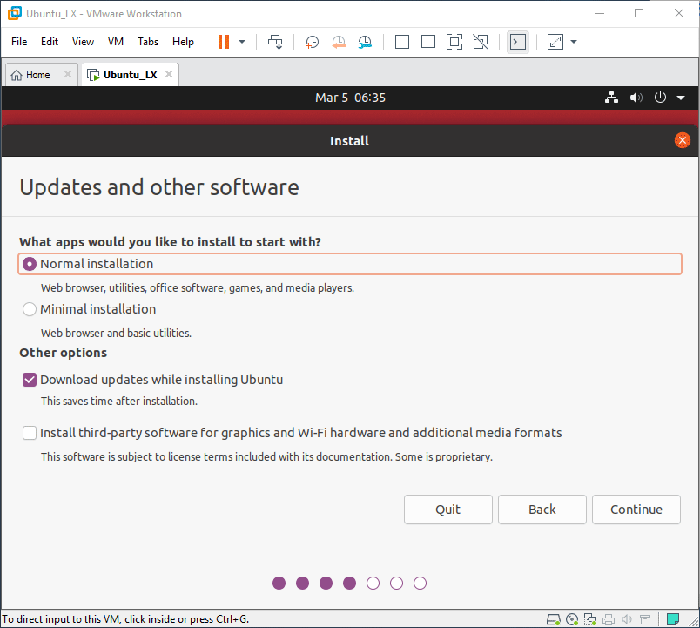
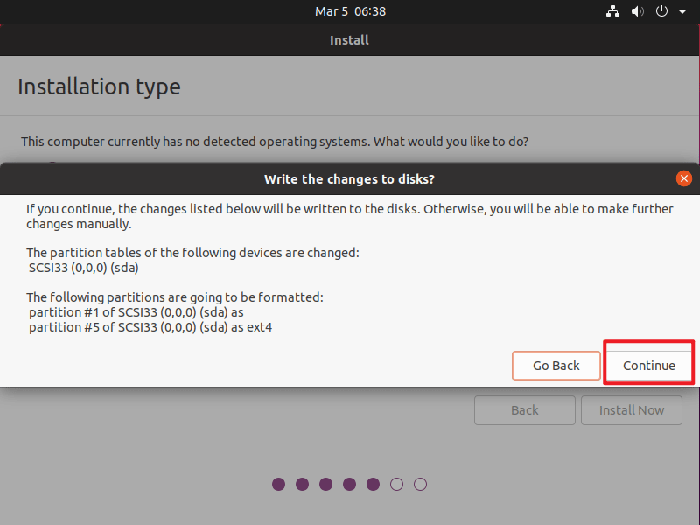
Fill in some information and then launch installation.
The installation takes a long while. And when it completes, Ubuntu will work properly on the virtual machine created by Windows 10 VMware.





















